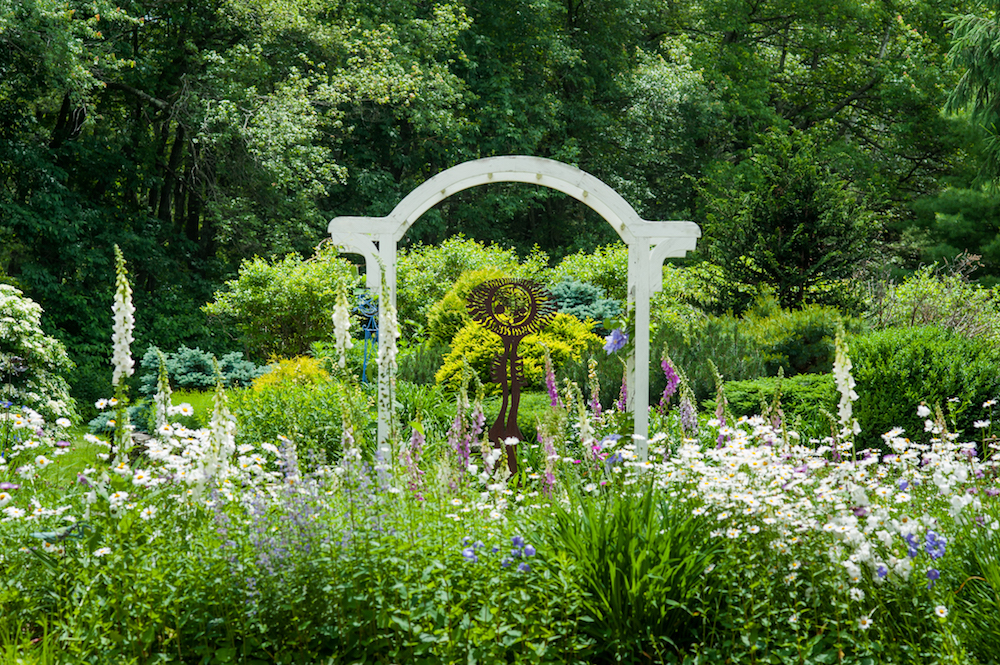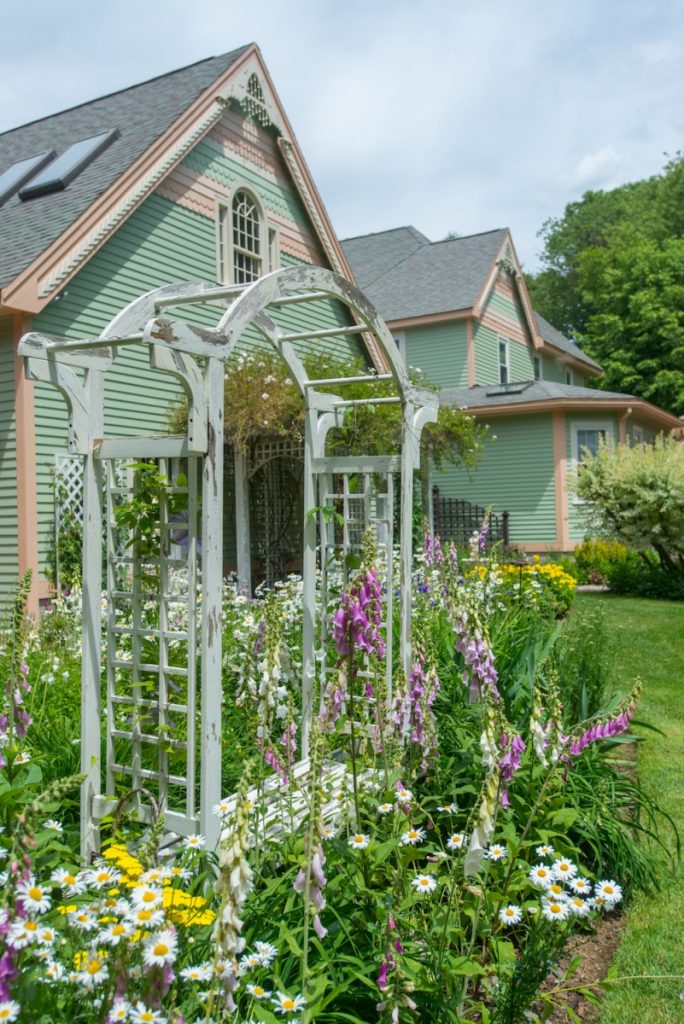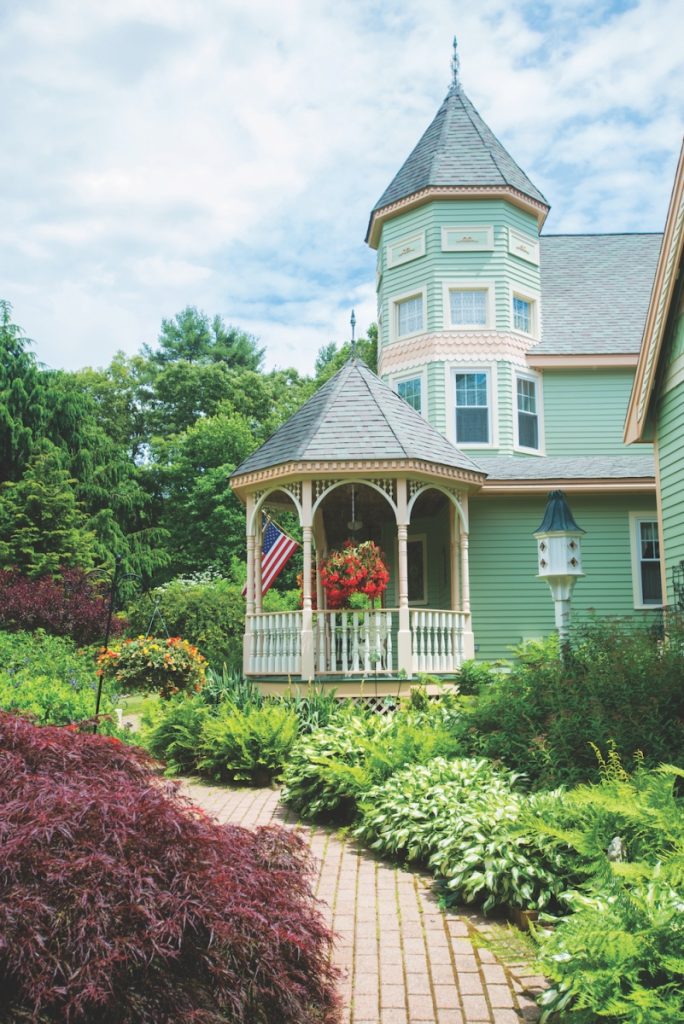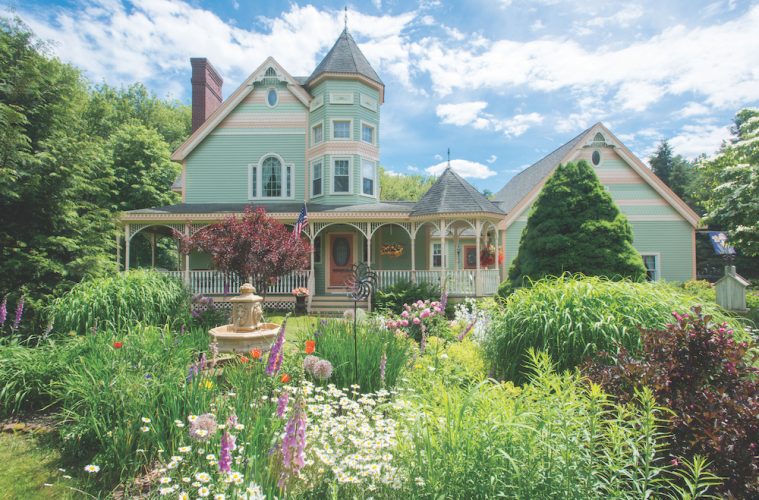It was a long flirtation. For years, Paula Guilbault drove by the Boxford Victorian with yearning in her heart. “We lived only seven miles away, and I watched the house being built,” she says. Their home at the time resided on an acre in neighboring Topsfield, and there simply was not enough garden to satisfy Paula’s proclivity to dig in. She craved additional land. So, when the “For Sale” sign appeared in front of the Painted Lady (a Victorian-era house with an elaborate paint scheme) of her dreams, Paula began to think seriously about turning her lust into a living relationship. The Guilbaults bought the delightfully ornate Victorian that sits proudly on its two acres, and Paula likes to joke that it was her best birthday present ever from her husband, Larry.

The front of the house was almost perfect, except for one little detail. Paula dislikes pink, and that was the primary shade the house was painted when the Guilbaults bought it. She lived with it for five years, “because it was newly painted and I’m a realistic person,” she says. But eventually, the artist/teacher painted it with colors for which she has an affinity. Meanwhile, a garden in the shape of a figure eight lay in front of the house, which worked beautifully with the turreted house and its attached gazebo. The Guilbaults embroidered onto what they were given, adding a fountain and bolstering the inventory with connoisseur plants. Other than beautifying the entry walkway, they kept the foundation clear of plantings on purpose: letting a house rise majestically from its setting was a Victorian tradition.
Even more important, the Guilbaults were given a priceless setting which framed the house. The previous owners left a legacy of shrubs and trees that made all the difference. In addition to several beautybushes (Kolkwitzia amabilis) that surround the house in a cloud of white spring blossoms, the property came with a crabapple, kousa dogwoods, and a weeping cherry.

The very first garden that the Guilbaults installed was a happy accident. They moved in late autumn and required a holding area to transition some treasured plants from their previous landscape. So they swiftly dug a bed conveniently positioned at the end of the driveway and filled it with a sort of Noah’s ark of favorites they couldn’t leave behind. That garden eventually moved from temporary to permanent status and became a seminal fixture in the landscape.
Meanwhile, the Guilbaults were focusing on the backyard, which was a completely blank canvas upon arrival, aside from a blueberry patch at the property’s farthest reaches. They envisioned a deck with a view of what they knew would become a garden. And they found the ideal gazebo at the Boston Flower Show to give the deck the retrospective ambiance befitting the rest of the accoutrements. Crafted by a former shipbuilder, the gazebo brings the backyard into the same dialogue as the front configuration. Like the front gazebo, the Guilbaults opted to attach the back gazebo to the house. “Many gazebos just sit empty and unused too far out in the landscape. We wanted to put ours in close proximity so we would really use that.” In addition, the same craftsman built an arbor over the walkway behind the garage to shoulder Paula’s climbing roses.

With the gazebo and deck in place, the Guilbaults needed backyard gardens to admire. The solution was a series of large, undulating island beds, each with a birdhouse or some other focal point. Following her inner artist, Paula is conservative about color in the garden. “I use a lot of green, and I love texture,” she says. “When I buy a plant, I really look at the leaves.” In other words, flowers are not the only colorful note in the garden. And the flowers in residence are often white. “White gives you a sense of peace, plus it makes all the other colors richer.” Paula finds that plants need to make a large statement, so she works with perennials that will gain girth in the beds, and uses window boxes and containers to cradle plants that will come and go in a season.
The Guilbaults do all the planting and maintenance personally, and their love is evident throughout. For that reason, they try to keep a tight rein on new projects. However, Paula’s newest initiative is to soften the periphery where the property merges into the surrounding woods and create a dialogue between cultivated and wild growth. As always, she is following her own drummer as she selects plants and their colors. Through the years, the consummate colorist has discovered a palette that works. But she takes the same outspoken approach that probably steered the owners of the original Painted Ladies. Ask Paula whether her palette for the scene is negotiable, and she doesn’t have to think. Her response, “My house, my rules.”

